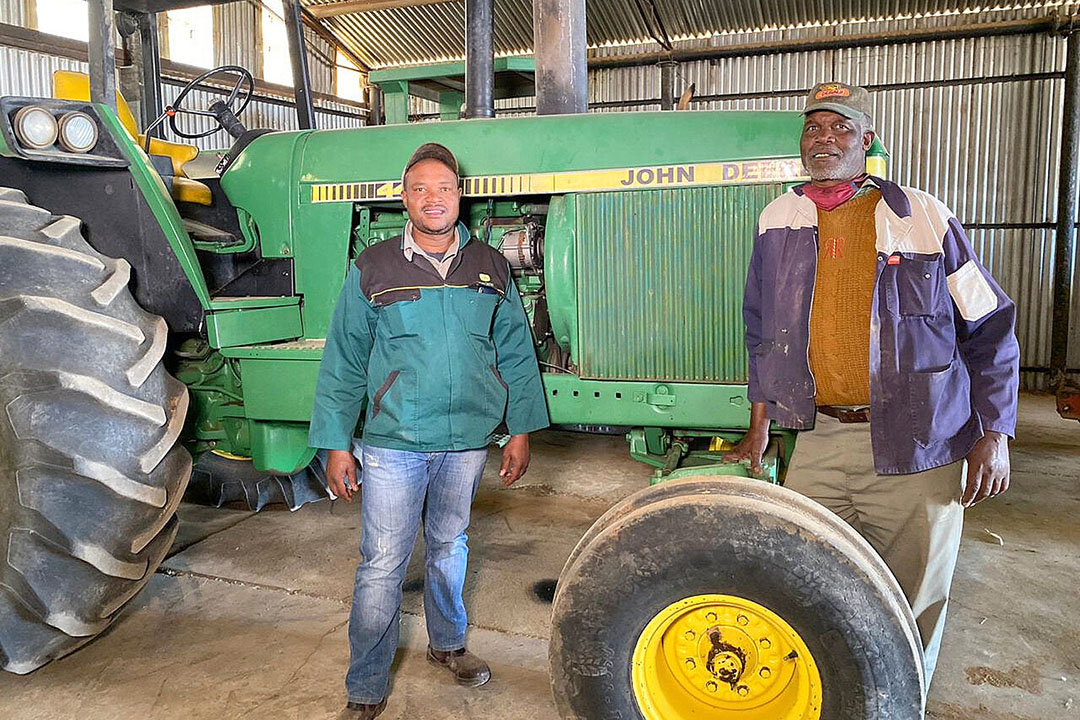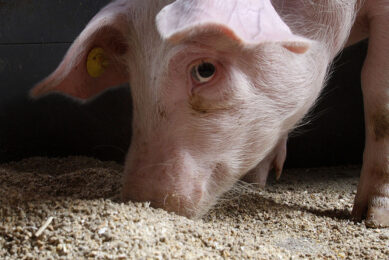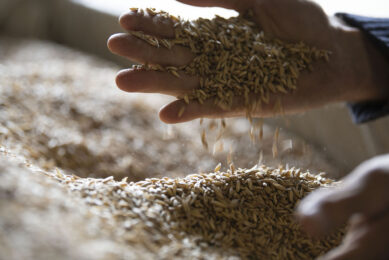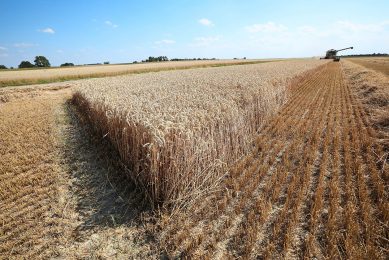South African farmer forward sells grain in Covid-19 era

Smart thinking by a South African grain farmer saw him forward sell grain for a decent price once he realised the Covid-19 pandemic was leading to a national lockdown and potential trading issues.
Clifford Mthimkulu, 31, runs a grain and livestock farm close to Senekal in the Free State growing mostly maize, soybeans and sunflowers. Trading as MC Enterprise, the young farmer manages almost 1000 hectares of land including his own farm and other land leased from neighbours. “I’ve been farming full time since 2010,” said Clifford, who works alongside his father Koos. “My main farm, which is called Astoria Farm, is based near the town of Senekal in the Free State. Astoria Farm extends to 517 hectares, and then I lease an additional120 hectares of land from my neighbour, Mrs Althea Trieghaard at Welmond Farm, and a further 300 hectares from Dawie van der Merwe at Wilgeboom Farm, which is located 35 kms from the main farm.”
Clifford’s interest in farming has grown over the years since he was a young boy watching his father work on farms. Now he has applied that passion to running his own business, ably guided by his father’s wisdom, and making it a success even when faced with the challenges of drought and fluctuating commodity prices. In fact, Clifford’s father Koos first acquired Astoria Farm through the government’s Proactive Land Acquisition Strategy back in 2006. At that time Koos also purchased used tillage machinery that belonged to a former farm employer who had switched farming policy to focus on livestock production.
Plant and harvest regime
Today Clifford grows 150 hectares of maize, 180 hectares of sunflowers and 50 hectares of soybeans with the remaining land used for grazing cattle and sheep. The livestock is kept as an income buffer in case the crops have a bad year and prices fall, thus ensuring that the farm can pay its bills. Clifford and his father employ eight permanent staff on the farm with three part-time and a further 30 seasonal staff called in when required for weeding and other tasks. His main planting season starts in November and harvesting kicks off in April. “We practice minimum tillage all the way, mainly using a Rolmoer ripper with rollers to open up the ground,” Clifford said. “Then it’s the normal plant, spray, harvest regime to get the crop sold and get money in the bank.”

“Normally we start the planting season in November to December for the maize. The soybeans are also planted during this period. And the sunflowers go into the ground a bit later: from November to mid-January,” he added. This productive area of South Africa usually receives annual average rainfall of 650 to 800 ml, but it can also be affected by drought and heavy late rainfall, which pose challenges for arable farmers. Temperatures can be as high as 38°C and drop to 5ºC during the winter period, so frost is an issue to look out for if you are planting late.
“Once the crops are established, we start the spraying programme during the growing season, hoping for a decent yield come harvest time,” Clifford said.
We would normally start harvesting the sunflowers and the soybeans in April and run through until June. The maize is harvested from June to August, hopefully in good weather conditions and thus achieving a good saleable crop.”
“Normally I plant the Dekalb maize variety, Pannar soybeans, Pannar and Agricol sunflower seeds, and sometimes Pioneer as well. “We use both GMO and non-GMO seeds in the maize fields, but I find the non-GMO crops more labour-intensive,” he said. “Using GMO seeds gives us higher yields for less cost, so that’s better for the financial bottom line.”

Higher yields
Clifford rotates the crop pattern on his land every two years, first growing maize, then sunflowers, then soybeans, followed by oats for the livestock. During the growing season Clifford has a few pests to contend with including guineafowl, meerkats, and rats. He carries out soil sampling every two years and adheres to a programme of spreading lime on around 30 to 50 hectares every year. Normally, on average, the maize yields 4 tonnes per hectare, the sunflowers 1.5 tonnes per hectare and the soybeans 1.3 tonnes per hectare, but this year, thanks to good management skills, the yields were slightly higher.
This year my maize harvested an average of 5.6 tonnes per hectare, the sunflowers came in at 1.8 tonnes per hectare and the soybeans at 1.6 tonnes per hectare, which was a really good harvest for us.” Clifford said
“We sell most of the crop immediately, but some is kept for feeding the livestock. After the land is harvested the cattle and sheep can graze over the land, which really cleans it up and of course it provides them with a good feed,” he said.

Opportunity due to Covid-19
Due to the challenges that the Covid-19 pandemic was throwing up Clifford saw an opportunity to protect his harvest price and forward sold most of his tonnage. He said: “This year we had agreed contracts in place for most of my crops, as I anticipated that Covid-19 would affect the markets. This was a good plan and helped me achieve 2350 Rands (US$ 158) per tonne for my white maize, 2500 Rands (US$ 168) per tonne for my yellow maize, 5700 Rands (US$ 384) per tonne for the sunflowers and 7000 Rands (US$ 471) per tonne for the soybeans,” Clifford added. Good returns mean that he can invest more in newer farm machinery and has recently purchased a John Deere 7200 four-row planter and a John Deere 7200 six-row planter. He favours the John Deere brand, saying their equipment is strong and lasts a long time if well cared for.
With South Africa now in its spring season Clifford and his team are already out in the fields preparing the soil for planting again.











